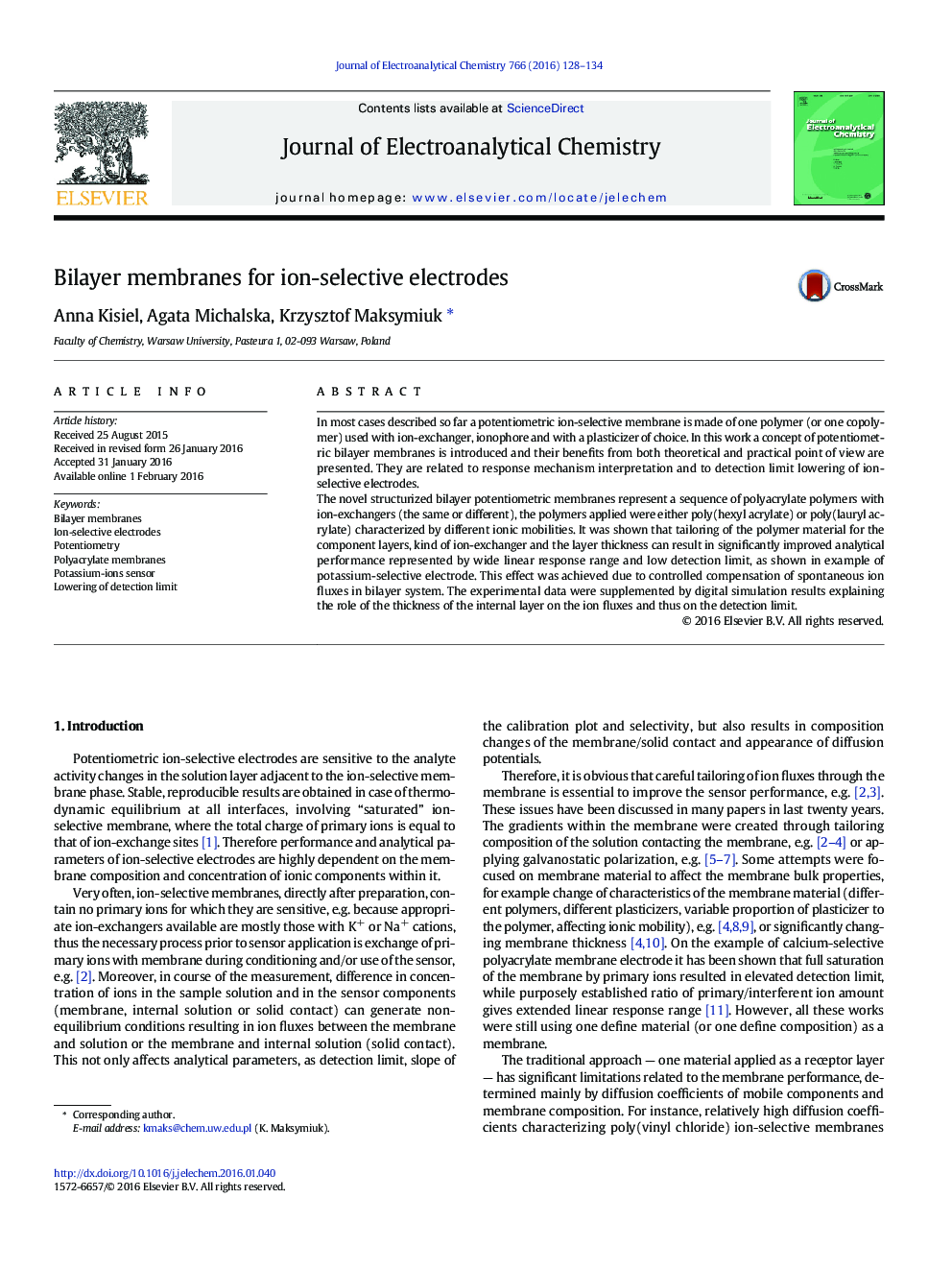| Article ID | Journal | Published Year | Pages | File Type |
|---|---|---|---|---|
| 218018 | Journal of Electroanalytical Chemistry | 2016 | 7 Pages |
•Bilayer ion-selective membrane consists of polyacrylate layers of different ion contents.•Application of bilayers enables tailoring of ion fluxes and analytical parameters.•Induced primary ion flux to the inner layer results in lower detection limit.•Digital simulations confirm the influence of layer thickness on potentiometric characteristic.
In most cases described so far a potentiometric ion-selective membrane is made of one polymer (or one copolymer) used with ion-exchanger, ionophore and with a plasticizer of choice. In this work a concept of potentiometric bilayer membranes is introduced and their benefits from both theoretical and practical point of view are presented. They are related to response mechanism interpretation and to detection limit lowering of ion-selective electrodes.The novel structurized bilayer potentiometric membranes represent a sequence of polyacrylate polymers with ion-exchangers (the same or different), the polymers applied were either poly(hexyl acrylate) or poly(lauryl acrylate) characterized by different ionic mobilities. It was shown that tailoring of the polymer material for the component layers, kind of ion-exchanger and the layer thickness can result in significantly improved analytical performance represented by wide linear response range and low detection limit, as shown in example of potassium-selective electrode. This effect was achieved due to controlled compensation of spontaneous ion fluxes in bilayer system. The experimental data were supplemented by digital simulation results explaining the role of the thickness of the internal layer on the ion fluxes and thus on the detection limit.
Graphical abstractFigure optionsDownload full-size imageDownload as PowerPoint slide
